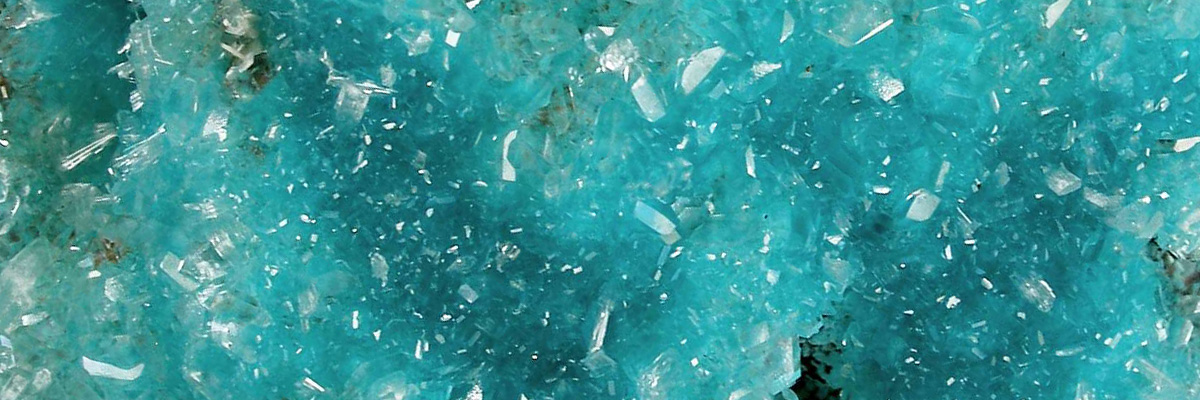Rosasite is a captivating secondary carbonate mineral belonging to the monoclinic crystal system. Known for its beautiful blue-green hues, rosasite often exhibits acicular, fibrous, or botryoidal crystal habits, giving it a unique and eye-catching appearance. Its color can range from pale blue to deep green, and the mineral possesses a vitreous to silky luster, making it a visually striking addition to any mineral collection.
Usage
While rosasite does not have significant industrial applications due to its rarity and small crystal size, it is highly sought after by mineral collectors for its stunning colors and distinctive crystal habits. The mineral is often found in association with other copper and zinc minerals, such as azurite, malachite, and smithsonite, adding to its appeal in mineral collections. Additionally, rosasite specimens are sometimes used for decorative purposes or as a unique display piece.
Gemstone
Although rosasite is not considered a traditional gemstone, its vibrant colors and unique crystal forms can make it an interesting and attractive choice for ornamental or decorative pieces. However, due to its relatively low hardness and delicate crystal structure, rosasite is not well-suited for jewelry applications and requires careful handling to preserve its delicate beauty.
Origin
Rosasite forms as a secondary mineral in the oxidation zones of copper-zinc deposits. It is created through the alteration of primary sulfide minerals, such as chalcopyrite, sphalerite, and galena, by the action of oxygen-rich water. The copper and zinc ions released during this process react with the carbonate ions in the water, leading to the formation of rosasite.
Occurrence
Rosasite is typically found in the oxidized portions of copper-zinc deposits, often in association with other secondary minerals such as azurite, malachite, and smithsonite. The mineral is relatively rare, but notable occurrences can be found in Tsumeb, Namibia, the United States (Arizona, New Mexico), Mexico, and Italy. These locations are known for their rich and diverse mineralogy, making them important sources of rosasite specimens for collectors.
Metaphysical
In metaphysical and spiritual practices, rosasite is believed to possess a range of properties that promote emotional healing and spiritual growth. The mineral is said to help individuals release negative emotions and foster a sense of inner peace, balance, and harmony. Rosasite is also considered a stone of communication, enhancing one’s ability to express oneself clearly and effectively. Additionally, the mineral is believed to stimulate creativity, intuition, and psychic abilities, making it a valuable tool for personal growth and self-discovery.
| Class | Carbonates |
| Formula | CuZnCO3(OH)2 |
| Luster | Vitreous to silky |
| Hardness (Mohs) | 4 |
| Streak | Light blue |
| Color | Blue, green, blue-green |
| Cleavage | Perfect in one direction |
| Specific Gravity | 4.0 – 4.2 |


